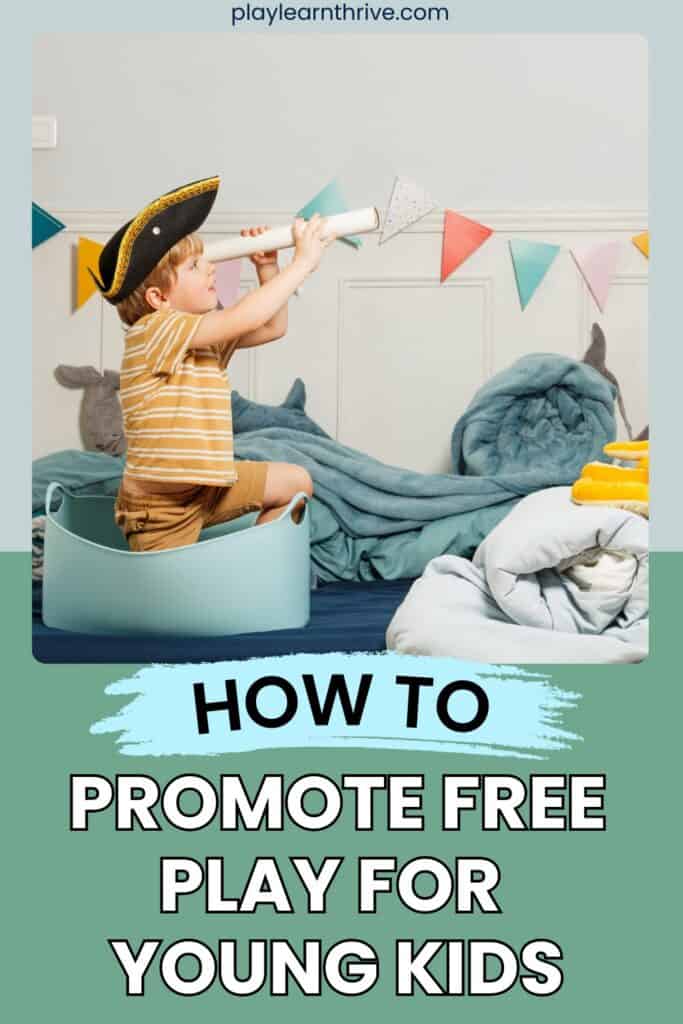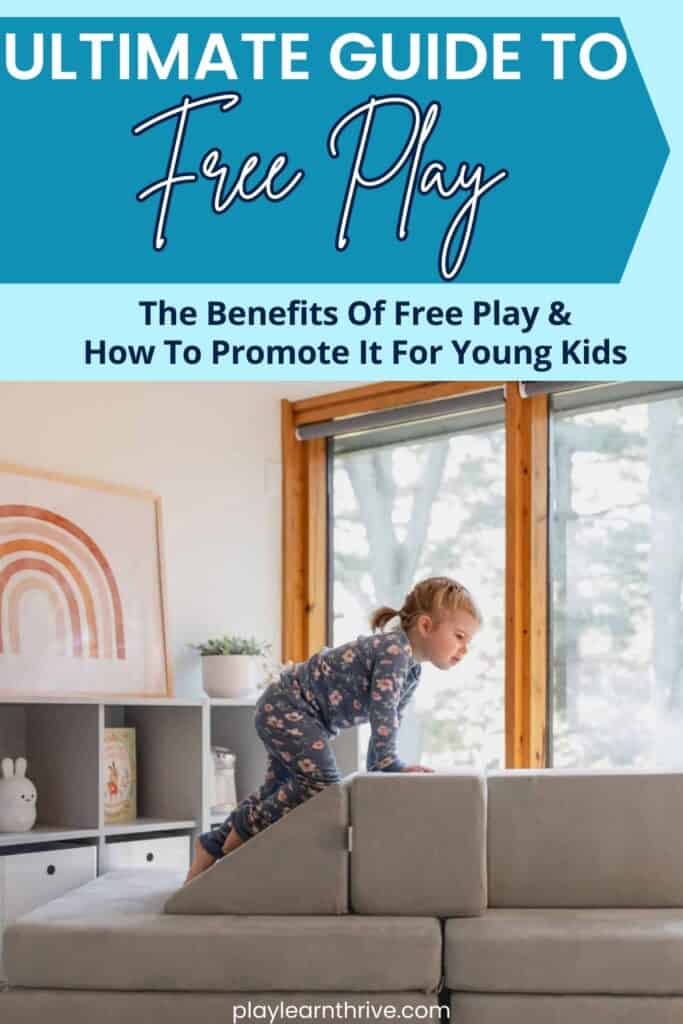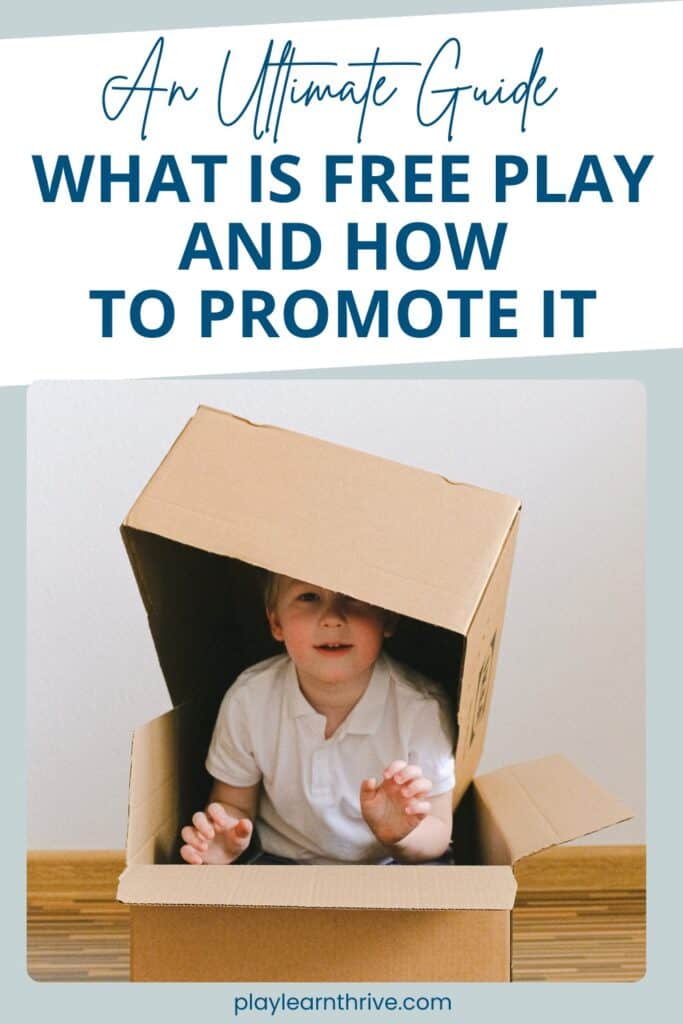What is Free Play and Why is it Important for Kids
Free play is essential to childhood development and kids may face a few struggles later on in life if they don’t get enough opportunities early on. This post outlines what free play is, why it is important, and how to incorporate more free play time into your routine.
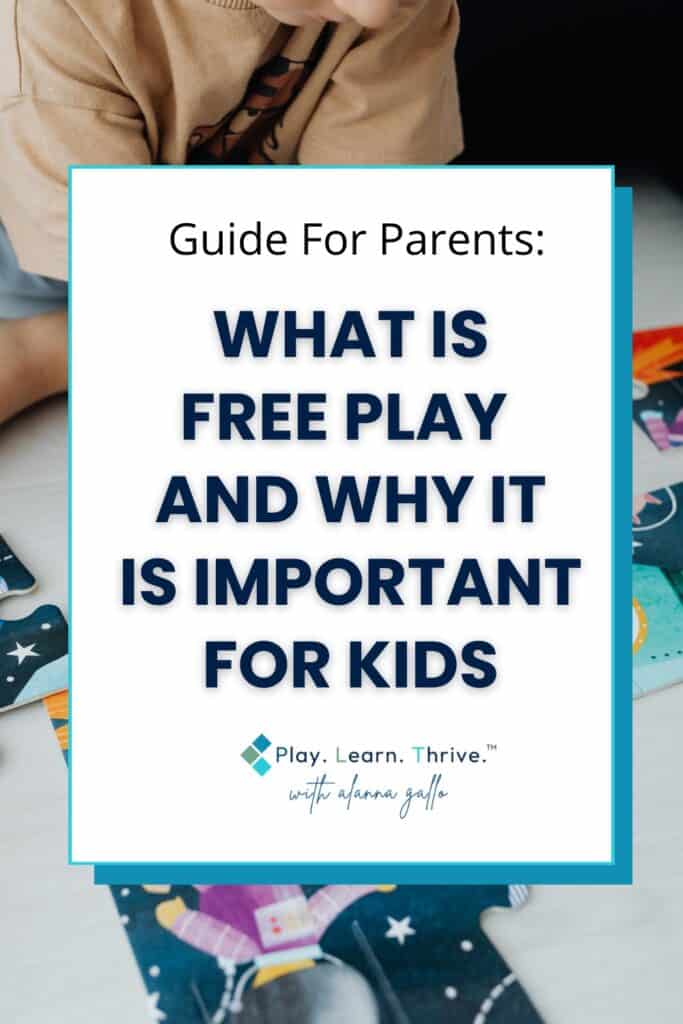
Play. Learn. Thrive.™ only endorses products we authentically love and use. Some of the product links in this post may be affiliate links. That means that if you click them and make a purchase, this site makes a commission. Play. Learn. Thrive.™ is also an Amazon Associate. As an Amazon Associate, we earn from qualifying purchases. It will have no impact on the price you pay or the experience of your purchase.
I stand behind free play being essential for childhood and I take a deep dive into why inside of this post, but it all starts with development. Before we get to that, though, let’s chat about what free play actually is.
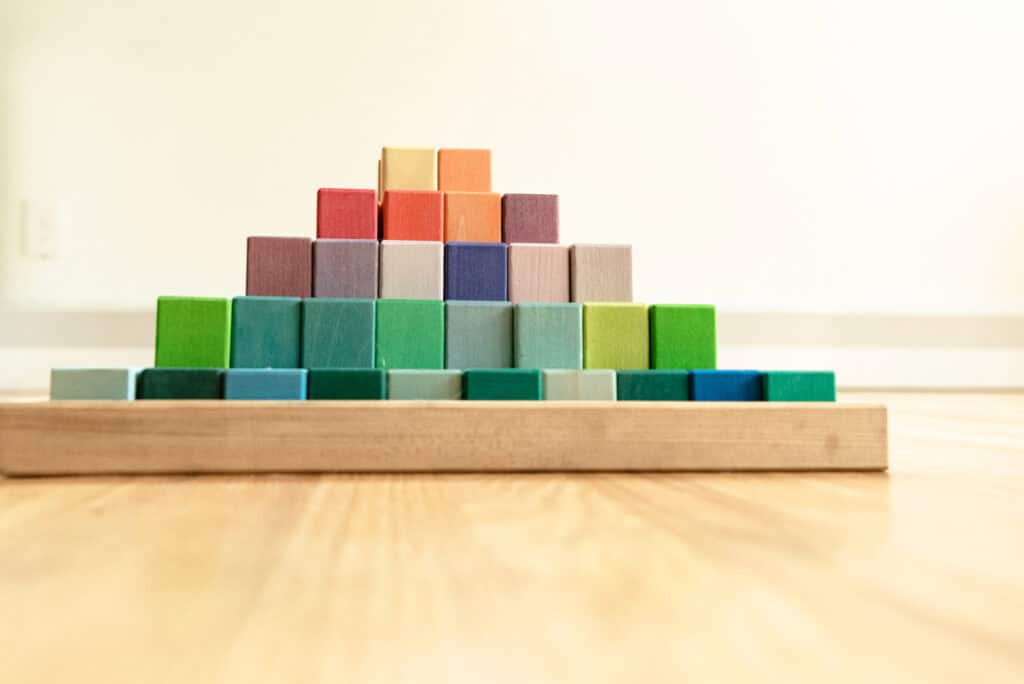
What is Free Play?
Imagine a child in a room filled with possibilities—no rules, no instructions, just pure imagination at play. That's what free play, or unstructured play, is all about.
It's the time when young children get to lead the way, exploring their surroundings, creating imaginary scenarios, and learning about themselves and the world around them.
Free play time is one of the keys to a child's recipe for growth and development. It's where they develop their cognitive muscles, such as problem-solving skills, as they work their way through building up their own ways of fun.
It's where they learn the art of social interaction, making friends, and resolving conflicts in their own unique way without parental guidance.
It’s also where they build emotional resilience, gaining the confidence to face life's challenges from a particularly early age.
The American Academy of Pediatrics agrees that free play is not just fun; it's essential for a child's healthy development. It's where they discover the joy of learning without even realizing they're learning, all in the safety of their own playful world whether that be at home or in the classroom.

What ISN’T Free Play?
Understanding what isn't free play helps us create more opportunities for unstructured exploration and self-directed learning.
Let's clarify what falls outside the realm of free play before we dive into some examples of free play that can be good for your child’s development, but not considered free play.
Parent-Led Activities
These are well-intentioned but often directed by adults and end up limiting children's independence and creativity. This includes sensory bins (my nemesis) and really anything that involves you giving instructions.
Organized Sports
While beneficial for teamwork and exercise, organized sports come with rules and structure, unlike the spontaneous nature of free play.
Crafts Requiring Parental Direction
Crafts that rely heavily on parental guidance can limit children's exploration and experimentation which is the whole purpose of free play.
Screen Time Apps Touted as “Play”
Despite their claims, many digital apps lack the open-mindedness and physical engagement found in genuine free play, offering a more controlled experience. So while they might be educational, they should be used sparingly.
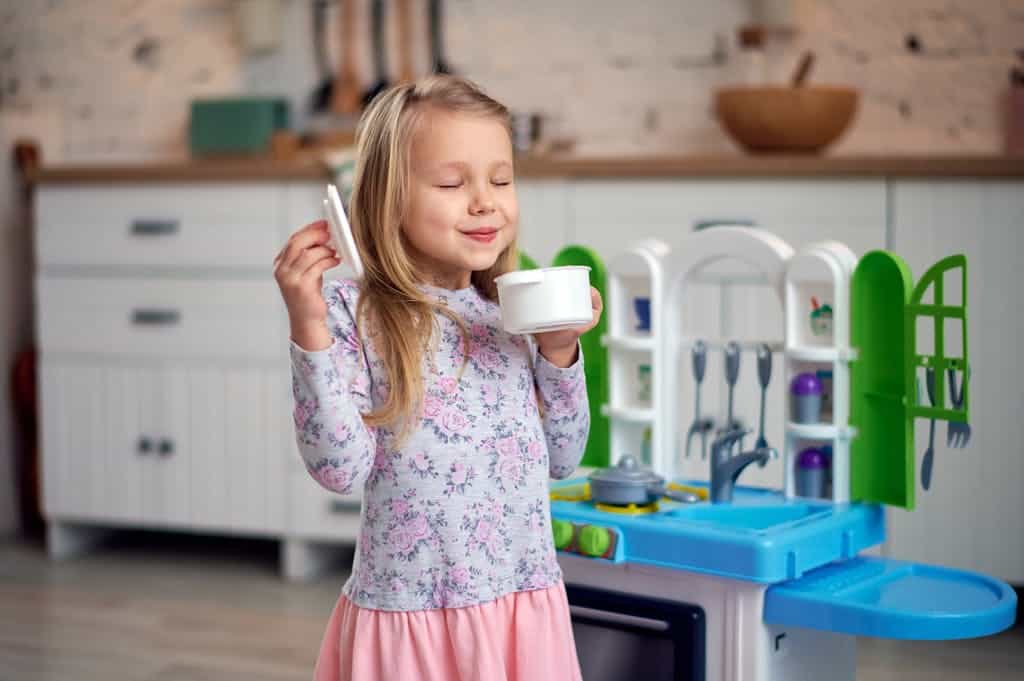
50 Simple Screen-Free Learning Activities for Curious Kids
These 50 hands-on activities help children develop problem-solving skills, creativity, and real-world knowledge—without needing a screen. Designed to encourage self-directed play, hands-on discovery, and deep learning, this guide gives you a simple way to turn everyday moments into powerful learning opportunities.
Why is Free Play Beneficial for Young Kids?
Understanding the importance of free play along with the benefits of free play goes beyond just seeing it as a source of entertainment. It is not just a way to encourage your children to get over being “bored”. It's a critical aspect of childhood development that impacts various areas of a child's growth.
Social and Emotional Skills
One of the first benefits of free play is that it serves as a well-rounded tool for children to interact with others and navigate their emotions.
Through unstructured play, kids learn valuable social skills such as cooperation, negotiation, and empathy.
Also, they develop emotional intelligence as they explore different roles, express themselves creatively, and resolve conflicts independently. I think we can all agree that watching our kids problem-solve in a safe space on their own is one of the best things!
Cognitive Skills
Engaging in different types of play, whether it's building with blocks, exploring outdoor environments, or inventing imaginative scenarios, stimulates cognitive development.
Children sharpen their problem-solving abilities, exercise their creativity, and enhance their spatial awareness through hands-on exploration and experimentation.
Physical Development
Free play encourages physical activity and helps children develop their motor skills, both gross and fine.
Activities like climbing, running, and jumping contribute to the development of gross motor skills, while things that involve the handling of objects, such as building with toys or crafting, such as using scissors, support the refinement of fine motor skills.
Reduction of Screen Time
With the ever-growing presence of digital devices (specifically tablets) in today's world, free play offers a valuable alternative to screen time.
It allows children to engage with the real world, which leads to creativity, imagination, and independence.
By unplugging and submerging themselves in hands-on activities, such as building with blocks IRL vs. building with block on an app, kids develop a deeper connection with their surroundings and learn to explore and discover in a tangible way.
There are so many benefits to reducing screen time!
Transform Your Family’s Screen Habits

Are digital devices dominating your family interactions? It's time for a change. Our Family Reset Mini-Course offers practical, manageable steps to significantly reduce screen time while enhancing your family's connection.
Healthy Child Development
Recognized by organizations like the American Academy of Pediatrics, free play is acknowledged as a crucial component of healthy child development.
It provides our kids with opportunities for self-directed learning, exploration, and personal growth in a safe and nurturing environment both at home and in the classroom.
All in all, free play serves as a foundation for proper development that builds up children's social interaction, problem-solving skills, sense of the world, and physical abilities, among other essential aspects of their well-being.
What Are Some Examples of Free Play?
Free play will look different depending on the child’s age, however, the key here is getting them to make use of open-ended toys and letting go of structured activities. A good way to do this is by offering a limited number of toys so as to not overwhelm them and allow them the space for some unstructured play.
Here are some ideas:
Imaginative Play
Kids can make up all sorts of adventures using their imagination.
Whether they're pretending to be pirates hunting for treasure or chefs cooking up a storm in their play kitchen, imaginative play lets them explore different roles and stories all on their own.
It's a great way for children to develop social skills, open up their creativity, and learn about different things via new ideas of play on their own.
Building with Blocks
Little ones love stacking blocks to create towers, bridges, or anything else they can dream up. I am a huge fan!
This activity not only helps children’s brains get creative but also helps them practice using their hands and figuring out how things fit together. Essentials for real life, right?
Building with blocks promotes cognitive development, problem-solving skills, and gross motor skills in early childhood.
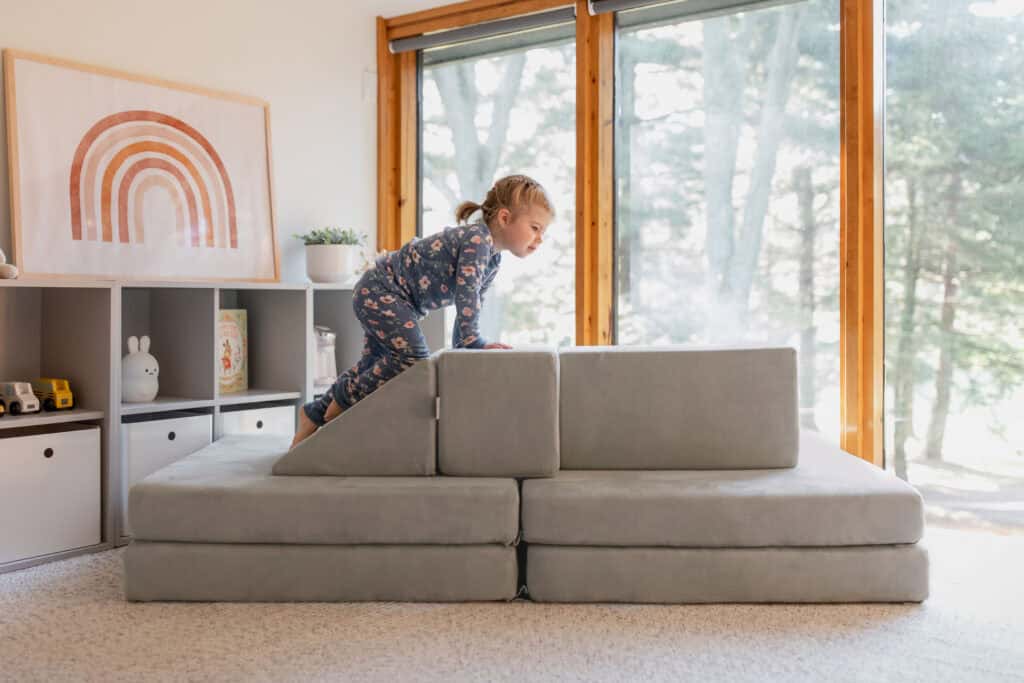
Figgy Play Couch = Must Have for Kids!
We adore our Figgy Play Couch because it is WASHABLE and DURABLE! It is a lot sturdier than other play couches out there and for us, the washable feature is what sold it! All of our kids love it and play with it every single day.
Role-Playing and Dressing Up
Dress-up time is a blast for kids! With costumes and props, they can become firefighters, princesses, or superheroes, going on all sorts of make-believe adventures.
It's a fun way for them to act out different characters and stories while developing their imagination and social skills through pretend play. Bonus points if they are doing so alongside their siblings/friends.
The best thing about role play and dressing up, in this case, is it becomes a highly creative activity that is fun for all ages.
Coloring and Drawing
Give kids some crayons and paper, and watch their imaginations soar. They can color, draw, and scribble to their heart's content, expressing themselves and creating their own little masterpieces that require limited adult supervision which, as I have stated already, is the key to free play.
The most supervision they might need would be guidance to learn to not draw on the walls, but that is another life skill that comes with the act.
Coloring and drawing activities support fine motor skills, encourage self-expression, and develop creativity in young children.
Playing with Cars and Dolls
Whether they're racing toy cars or taking care of baby dolls, these activities let kids use their imagination and creativity, and all they need is a little free time.
They can come up with all kinds of stories and scenarios, learning and having fun at the same time again with limited adult supervision for the best-desired outcome.
Playing with cars and dolls drives imaginative play, encourages social interaction, and promotes emotional development.
Exploring Outdoor Spaces
Sending kids outside to explore nature and play in outdoor environments is essential for their development and good for all ages.
Outdoor play in a solid outdoor environment provides opportunities for physical activity, sensory exploration, and imaginative play. It also allows children to connect with the natural world, develop gross motor skills, and learn about their environment.
How to Promote Free Play for Young Kids?
First off, get them away from screens. I’ll be the first to say that I am not a screen supporter. They do have their purposes, but I don’t believe that they should be the center of your child’s attention.
If you are feeling lost on how to get your child to detox from their screen habits, or for tips on how to help them with it, I’ve got you covered in my Screen Reset Mini-Course.
Find out the secrets for handling life without screens and how to actually stick to the new lifestyle. Trust me, everyone will be so much happier.
After breaking free from screens I would suggest the following:
Let Them Be Bored
My first suggestion, embrace boredom. Boredom is what will lead to the development of various skills that have been mentioned in this post.
Create a Variety of Play Zones
Designate different areas in your home or yard for specific types of play, such as a building area with blocks, a cozy reading corner, and a space for imaginative play with costumes and props.
Rotate Toys Regularly
Keep a selection of toys accessible to children and periodically rotate them to maintain their interest and encourage exploration of different play experiences. I prefer decluttering, but toy rotating might be a better option for you.
Encourage Outdoor Exploration
Provide plenty of opportunities for outdoor play by setting up a backyard play area that is age-appropriate, or take trips to local parks and nature reserves if you do not have a backyard.
Schedule Unstructured Playtime
Allocate blocks of time each day for children to take part in unstructured play without adult direction, allowing them the freedom to explore and create at their own pace. Remember, hands off. Let them be!
Embrace Risk and Adventure
Allow children to take calculated risks and explore their physical limits through activities like climbing trees, balancing on logs, and building makeshift forts using found materials. I know, scary, but they are all good ideas for development.
Provide Open-Ended Toys
Offer toys and materials that can be used in multiple ways, such as blocks, play dough, pikler climbers, and loose parts like sticks, stones, and play silks. I am a big proponent of open-ended toys because those are the toys that will promote imagination and creativity.
Limit Structured Activities
Avoid overscheduling children with extracurricular activities and commitments, leaving plenty of time for unstructured play and downtime to recharge and explore their own interests. You do not have to keep your kids busy. They will learn how to keep themselves busy.
Model What You Want to See
Demonstrate the playful activities you want your children to partake in with your children, whether it's building a sandcastle at the beach, playing dress-up at home, or inventing silly games together. They won’t know how to do things, and might not feel encouraged if they don’t see you showing them the way first.
Create a Play-Friendly Environment
Remove obstacles to play by making sure that play spaces are safe, easily accessible, and free from distractions.
All in all, free play is not just a way for children to pass the time; it's a crucial aspect of their development.
Through unstructured play and imaginative fun, children develop essential skills such as problem-solving, social interaction, and emotional resilience.
As parents and caregivers, it's important to recognize the significance of free play in healthy child development and by providing opportunities for children to engage in open-ended play, whether it's building with blocks, exploring outdoor environments, or engaging in imaginative scenarios, we can support their cognitive, emotional, and physical growth.
So let's embrace the role of free play in our children's lives and create environments that promote creativity, curiosity, and joyful exploration that will ultimately lead to a life full of exploration and fun.

